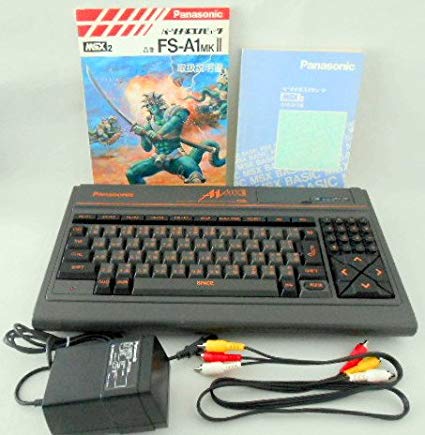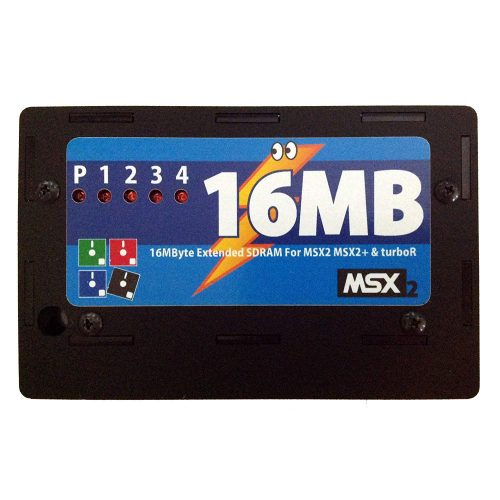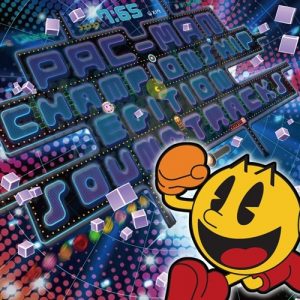
You might not know the MSX, especially if you’re from America, but this computer standard made waves in Japan and elsewhere around the world in the 1980s and became a hotbed of game development in Japan, including titles from famous studios like Konami and Hudson Soft. In this article we’ll be covering the development of the MSX itself, some notable games and developers, and its legacy. Boot up, let’s go!
Japanese PCs in the 80s - MSX Origins
In the early 1980s Japanese companies like Hitachi, Fujitsu, NEC, and others had already established a strong presence in making personal computers in Japan with systems like the FM-8 and PC-6001, but there were still some roadblocks to mainstream success. Without getting too technical, many of these earlier PCs had substantial hardware and operating system differences that made lots of software totally incompatible between systems, limiting the number of releases and ports.
Enter Kazuhiko Nishi, vice president of Microsoft Japan and director of ASCII Corporation. After seeing the success of VHS in standardizing home video systems, Nishi proposed a similar standard for home computing that would allow many new hardware manufacturers to enter the PC market with compatible software between the different machines. He based his design and specifications on the Spectravideo SV-328 and largely used off-the-shelf parts to further simplify production. The MSX name stands for "Machines with Software eXchangeability", appropriate for what was central to Nishi’s goal.
Formally announced on June, 27 1983, with the backing of many different Japanese companies such as Sony, Toshiba, Casio, Yamaha, Sharp, and Panasonic and foreign firms like Phillips and Samsung, the MSX became the dominant computer system in Japan, Korea, Argentina, and Brazil and had a strong following in continental Europe and certain middle eastern countries. Later revisions included the MSX2, 2+, and TurboR continued the legacy into the early 90s.
MSX and Gaming - Stairway to Greatness
With the MSX unveiled the same year as Nintendo’s Famicom, Japanese game development was set to skyrocket due to advances in technology, a robust economy, and creative developers ready to capture growing enthusiasm for home video games.
Classic gaming juggernaut Konami was an early and prolific developer for the MSX, releasing many of their arcade hits like Gradius, Frogger, and Twinbee along with entirely new games like Parodius, Antarctic Adventure, and it’s sequel Penguin Adventure, which was the first game famous designer Hideo Kojima worked on. Kojima would later direct a variety of games including the original Metal Gear, Metal Gear 2: Solid Snake, Snatcher, and Snatcher SD for MSX/MSX2 as his career began to really take off. Another noteworthy release from Konami was Vampire Killer, an entry in the Castlevania series that shares a lot with the original Famicom Disk System/NES game but has more of a focus on exploration and lock and key puzzles and completely different level design.
Hudson Soft was another famous company who developed many games for the MSX with titles like the original Bomberman, Adventure Island, Nuts & Milk, and Princess Tomato in the Salad Kingdom. Compile also had a number of fantastic releases for the system including the original Puyo Puyo, Zanac, and Aleste. Many of the games we’ve mentioned were also released on other platforms like the Famicom and NEC PCs, sometimes with major changes as with Vampire Killer. Some notable ports to MSX include Final Fantasy, Dragon Quest, R-Type, Ys I-III, and Wizardry I-III.
Final Thoughts

The MSX enjoyed a fantastic library of games, on par or exceeding many of its contemporary home computer and video game systems with impressive visuals and sound, and strong support from all-star developers like Konami. With its cartridge-based games and plethora of controller options, the MSX almost feels like a cross between a home computer and a dedicated game console. Many companies and game designers would cut their teeth on MSX in the formative 8-bit era that would go on to influence games as we know them now, cementing the system’s legacy in the history of game development.
While there’s many more intricacies in the history of games on the MSX, not to mention the numerous hardware variants and modern enthusiast revivals, we hope that you enjoyed this little window into the Japanese gaming scene that’s perhaps not discussed as often as it should be. Let us know your thoughts in the comments section below and make sure to stick around Honey’s for more all things gaming and otherwise! END
Recommended Post


